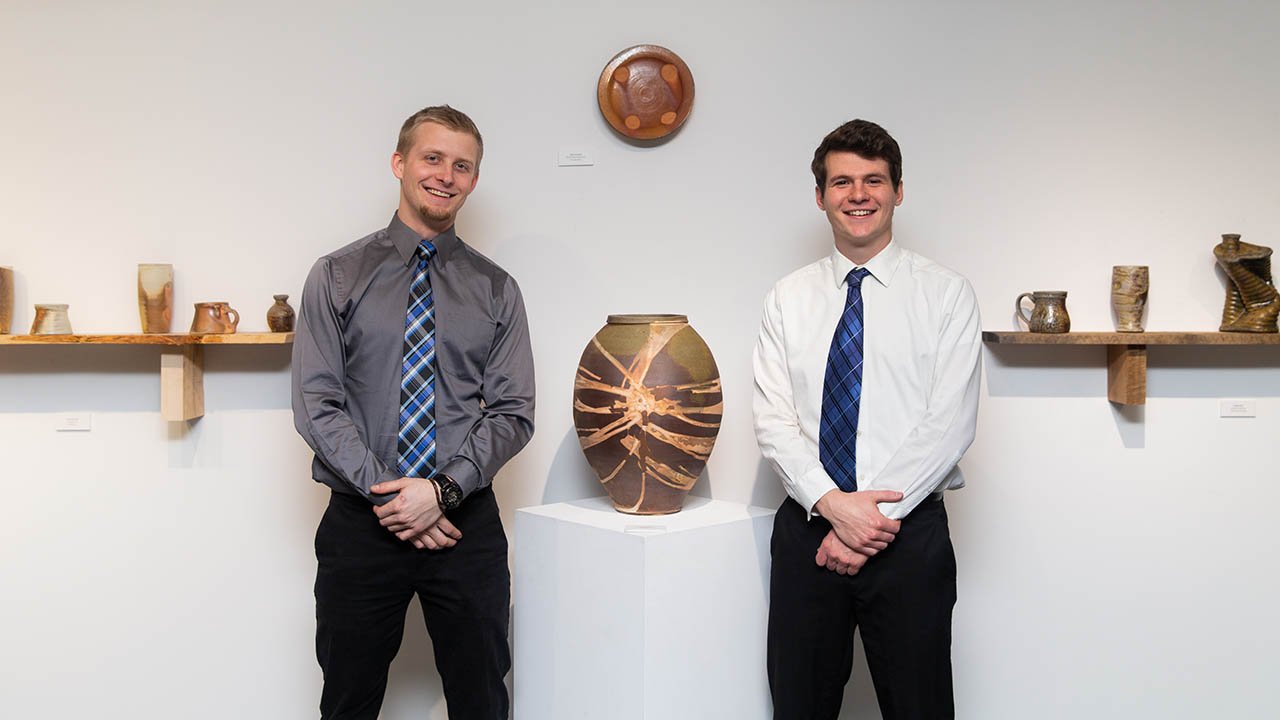
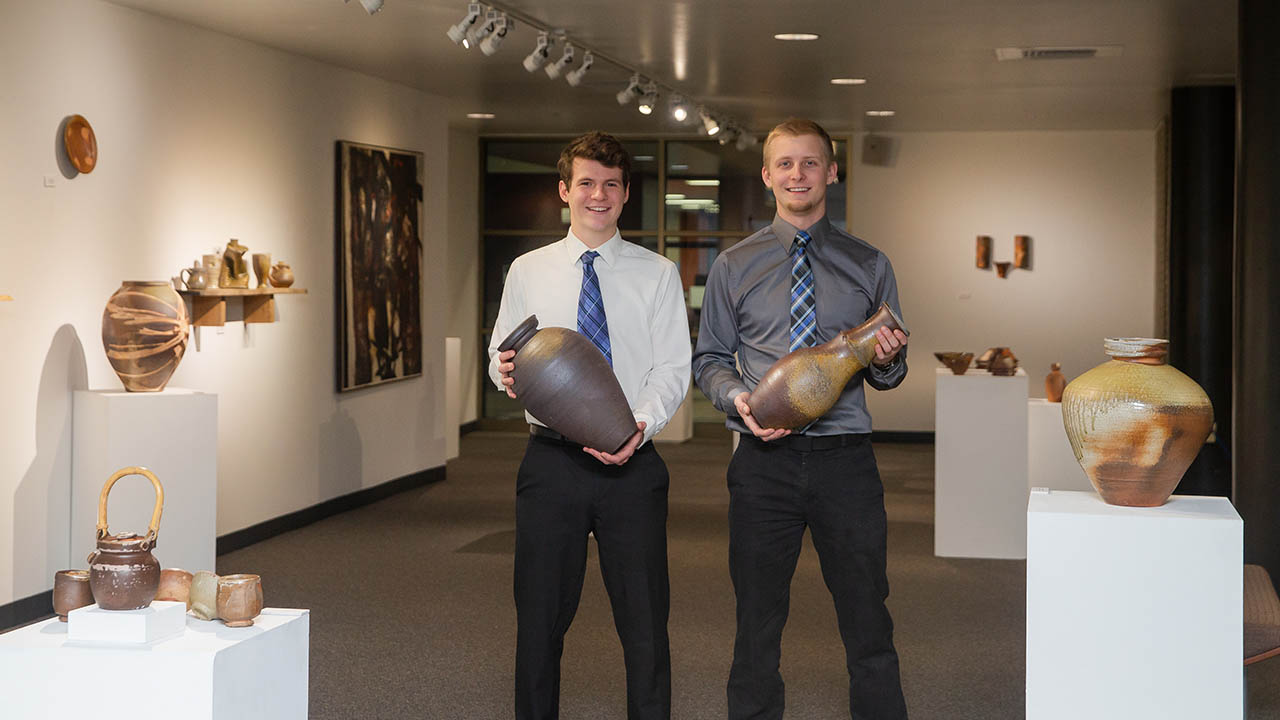
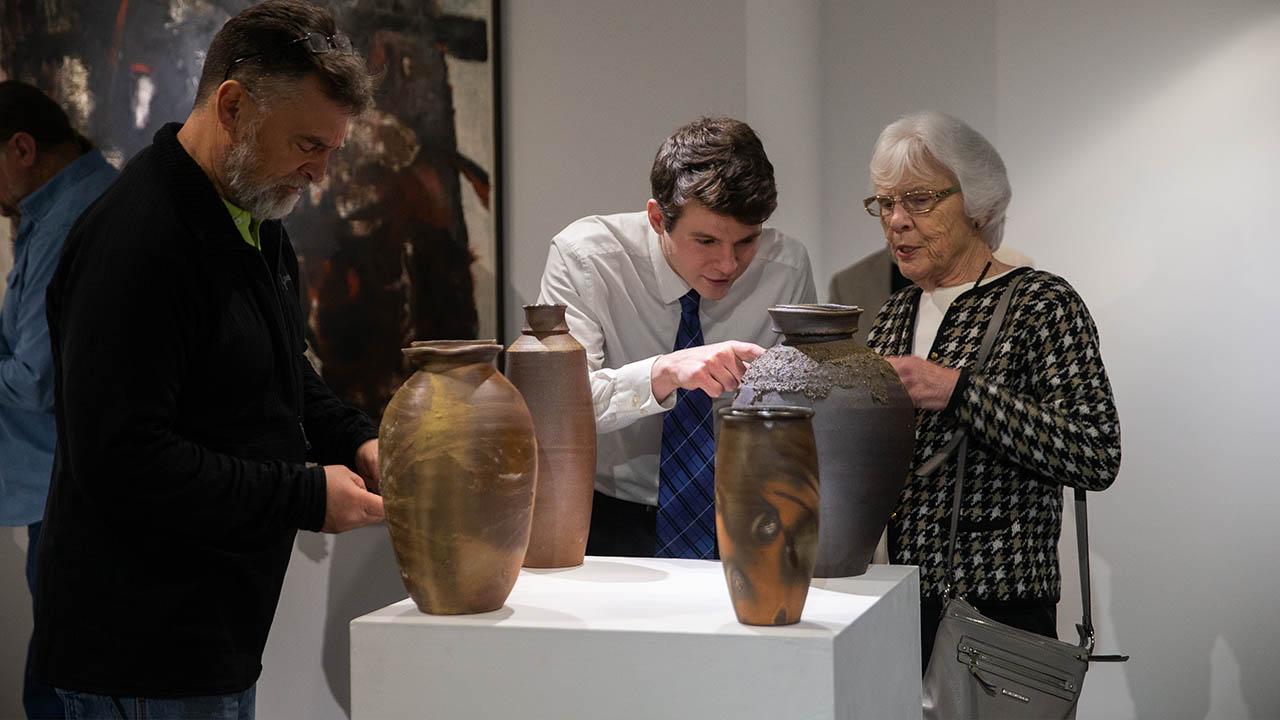
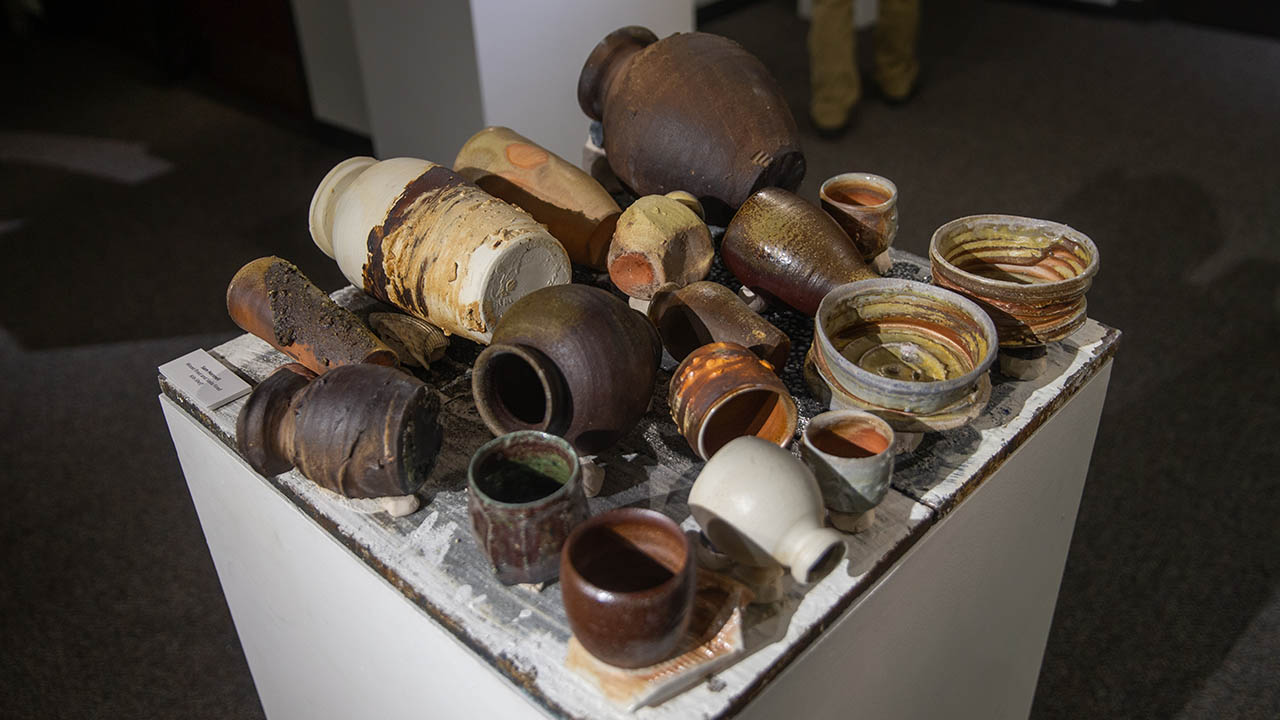
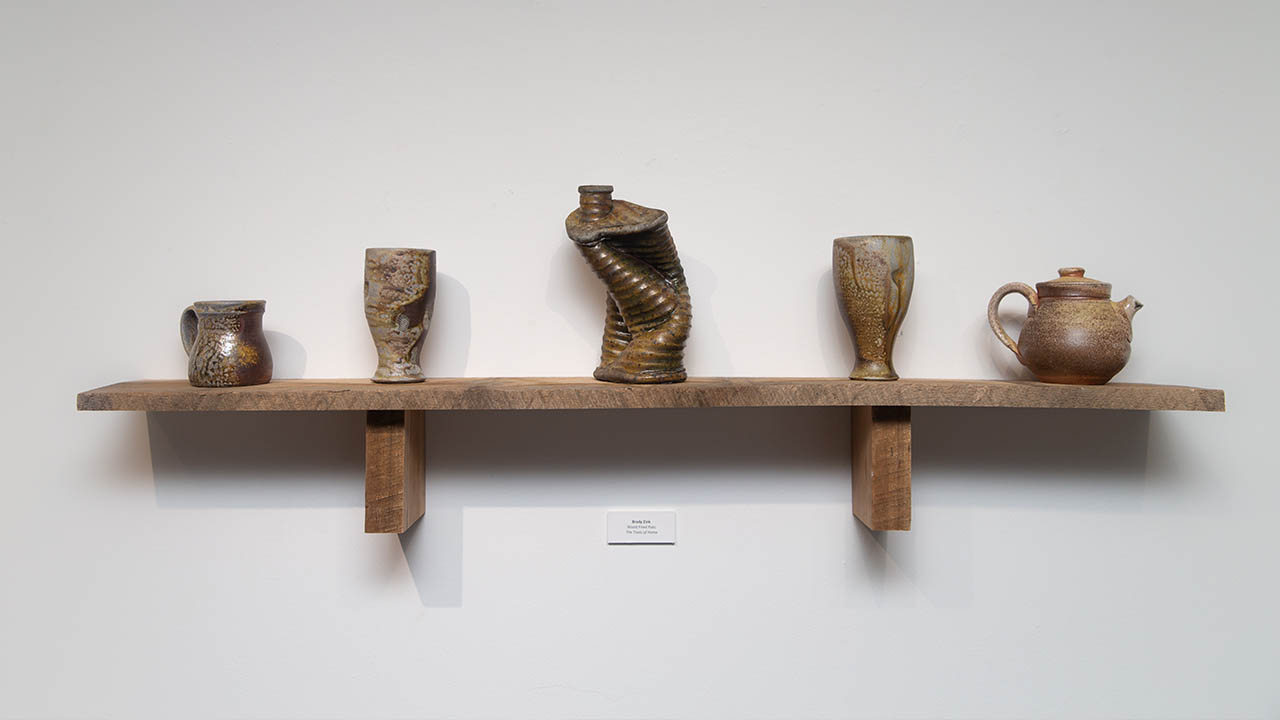
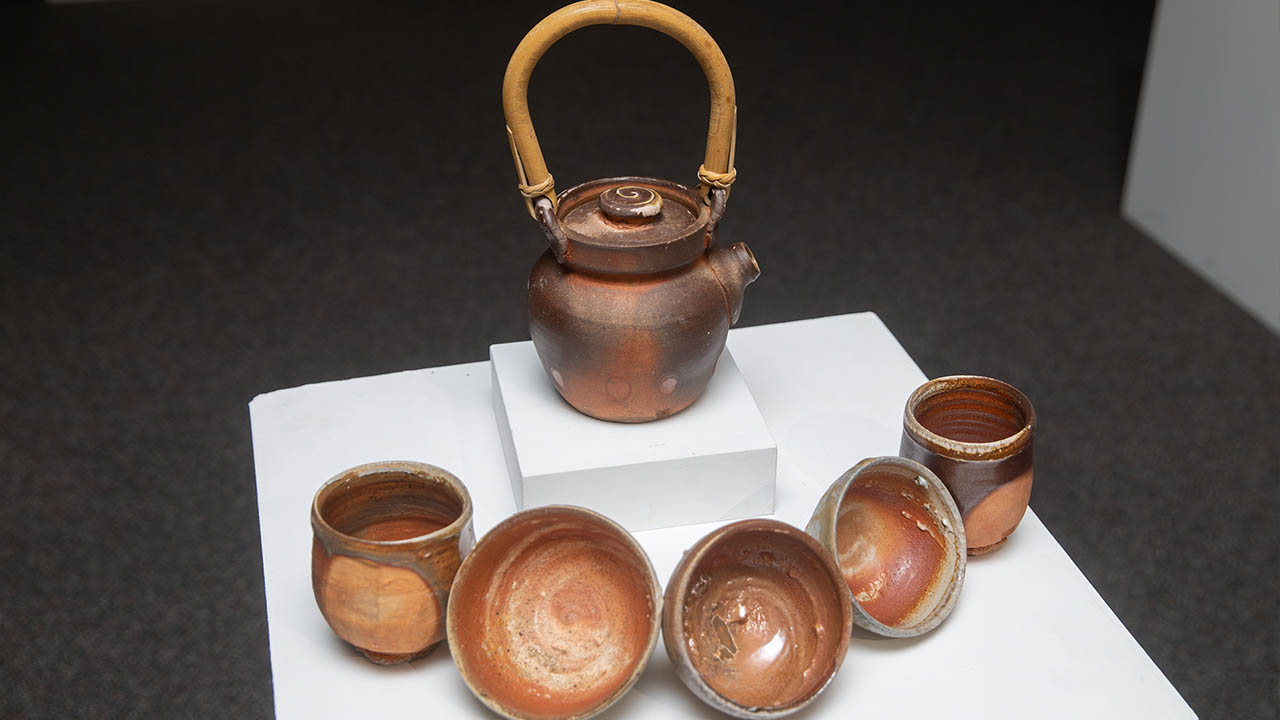
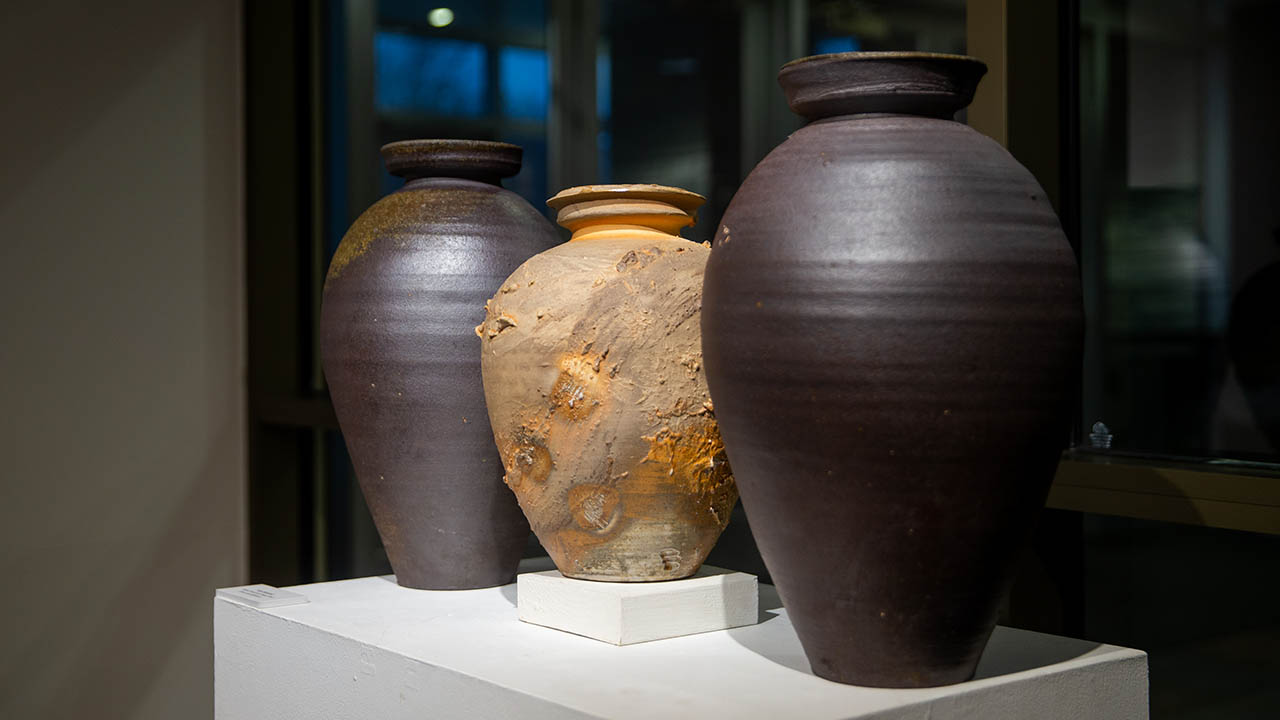
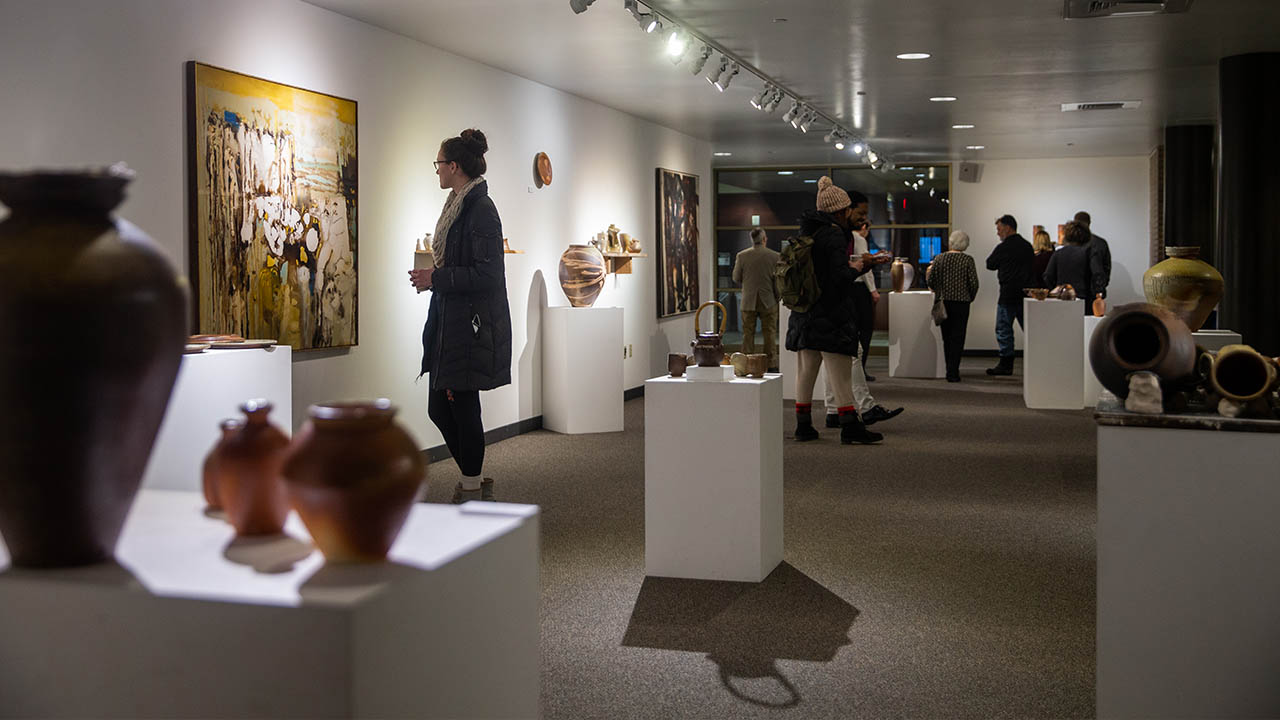
Two University of Wisconsin-Platteville students from the College of Engineering, Mathematics and Science are using a creative outlet to enhance their education. Brady Zink and Sam Horsnell share a passion of science and ceramics, which has led their collection of pottery to be showcased in the Harry and Laura Nohr Gallery until March 3. Their collection of art is titled Kiln Rats.
“It’s such a wonderful experience to be able to have this opportunity to show my work,” said Horsnell, a senior engineering physics major from Oregon, Wisconsin. “This is my first show I’ve ever been in. This is the first time someone has asked me to be in a show and celebrate my works of art.”
“It feels good to show the rest of campus just because you are not an art major, it doesn’t mean you have to separate yourself from that area,” added Zink, a senior sustainability and renewable energy systems major from Winneconne, Wisconsin. “It’s nice to demonstrate the fact engineering, math and science is connected to art.”
Zink and Horsnell are both studio assistants. Zink has been part of the art department since his freshman year, and Horsnell joined his sophomore year after taking a ceramics course to fulfill a general education requirement.
“My first ceramics course was with Bruce Howdle, and it was his last semester here. I got to build up a relationship with him. In the fall Scott [Steder] taught the advanced ceramics course that I took. He hired me on as a shop hand and I’ve been working there ever since,” Horsnell said.
“Your daily job is to make things the students and classes will use,” said Zink. “It continually makes you learn on the spot, you make mistakes, but you learn on the spot. You gain a lot of experience in active chemistry.”
Through their ceramic experiences, they took on the challenging task of using a wood kiln for the majority of their pieces displayed in Nohr Gallery. Using a wood kiln is a labor-intensive process where every seven minutes wood needs to be placed in the kiln.
“We fired the kiln for almost five days straight. It was five days of firing it, 24-hours of feeding it with wood and splitting wood,” said Zink.
“You are more likely to have a failing pot firing with wood fire kilns than any other type of firing,” said Horsnell. “It’s because of this dramatic process; these flames wrapping over the pots creating heat differentials across the pots which creates tension.”
Horsnell calls the process alluring. “If you are distracted, if you’re taken away from it, if you’re not intentional on how you do things, you have failure,” he said. “The attention to detail and the relationship you have with your work is something I find really beautiful and very powerful."
Zink wants the audience to see the process of experimentation through science. He acknowledges when he first started making pottery, he wanted everything to be perfect, but now he focuses on removing that hesitation.
“It was the engineering side coming out,” he said. “I want to fight that when I’m making stuff. It’s what I try to do – I try not to overthink; a lot of overthinking happens in all my other classes.”
Horsnell enjoys creating vessels in a Japanese style due to the strong forms. “I want people to wonder how these things were made and why they look how they do; I think that’s very powerful,” he said. “The initial question allows for a series of other questions that really empowers viewers to keep asking questions.”
Through their artwork both students recognize working in the ceramics studio is beneficial when it comes to their studies.
“You can’t do art without math and science. You can’t do math and science without creativity. Creating lines between those is really disingenuous to either process,” said Horsnell. “Through ceramics I learned a lot about the chemistry involved, thermodynamic process, as well as many of the physical components of what’s going on. It goes back to when I’m thinking of solutions in my engineering world, I’m kind of thinking outside of the box.”
Zink echoes that sentiment. “Exploring creativity is never a bad thing to do no matter what field you are going in to. For me, specifically, I apply the concepts I learn to the art I make. Through applying that, I learn a little bit more about the very same subject through the art.”
As both students are nearing the end of their academic career at UW-Platteville – Horsnell is graduating in May and Zink in December – they said they’ll always remember this moment of presenting their Kiln Rats collection.
“We are always in the art building, always challenging each other,” Zink said. “We have one piece where both of our pottery is on there, it’s called Challenge and Passion. It’s because we are both passionate about what we are doing for a career and creativity. It was important to have the show with Sam, and I’m glad we got the opportunity to do it.”